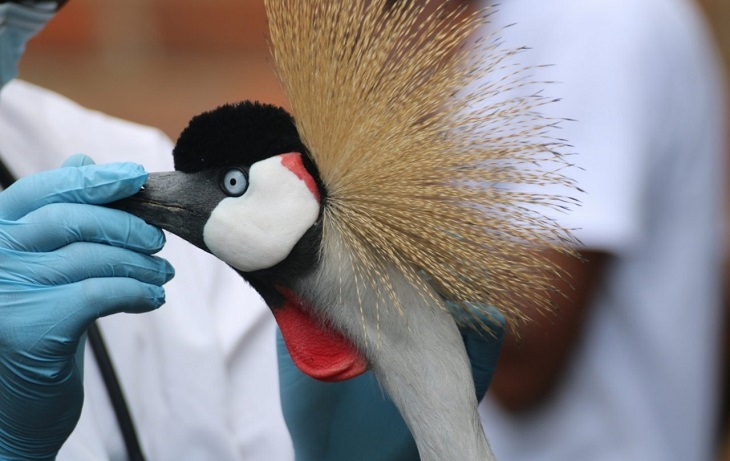Rwanda is doing a remarkable recovery of Rwanda’s Grey-crowned cranes from near extinction due to the efforts of conservationists and local vet Olivier Nsengimana.
Captured as chicks and kept as status symbol pets in the gardens of hotels and private homes, the birds were almost wiped out. Destruction of their habitat for agriculture added to the pressure and by 2012, only around 300 remained in the wild.
The majestic cranes are seen as “a symbol of wealth and longevity” in Rwanda, says Nsengimana. “People love them so much, but [the] lack of awareness is like too much love… It created a threat.”
In 2014, he worked alongside the Rwandan government to launch an amnesty initiative to encourage owners to surrender their pets without fear of prosecution. Since 2014, CNN hears that 242 greys-crowned cranes have been successfully rescued from captivity.
Healthy birds are released to a rehabilitation site near Rwanda’s border with Tanzania and those that cannot survive in the wild are kept at Umusambi Village — a crane sanctuary in Kigali run by Nsengimana’s organization, the Rwandan Wildlife Conservation Association.
Last year, a census identified 881 grey crowned cranes in Rwanda. Nsengimana, who was named a Laureate of the Rolex Awards for Enterprise in 2014, says he is “fairly confident” that no more cranes remain in captivity in the country.
“This is really a huge success story that we share with all Rwandans,” he says. “If we work together, if we can bring everyone on board, we can achieve the unachievable.”
CNN learns that grey crowned cranes are found in 15 countries across eastern and southern Africa, with the biggest populations in South Africa, Kenya, Uganda, and Zambia. Nsengimana believes there’s no “copy and paste” solution for all countries, but lessons can be learned from Rwanda’s success.
Nsengimana says that while cranes are not migratory, they do travel across borders and a “huge” joint effort will be needed to remove them from the endangered species list.
“When I was little, I saw cranes really coexisting with people and… I would really like to see that kind of balance coming back,” says Nsengimana. “We want people to see cranes as part of them, as their friends, as a part of their life.”

